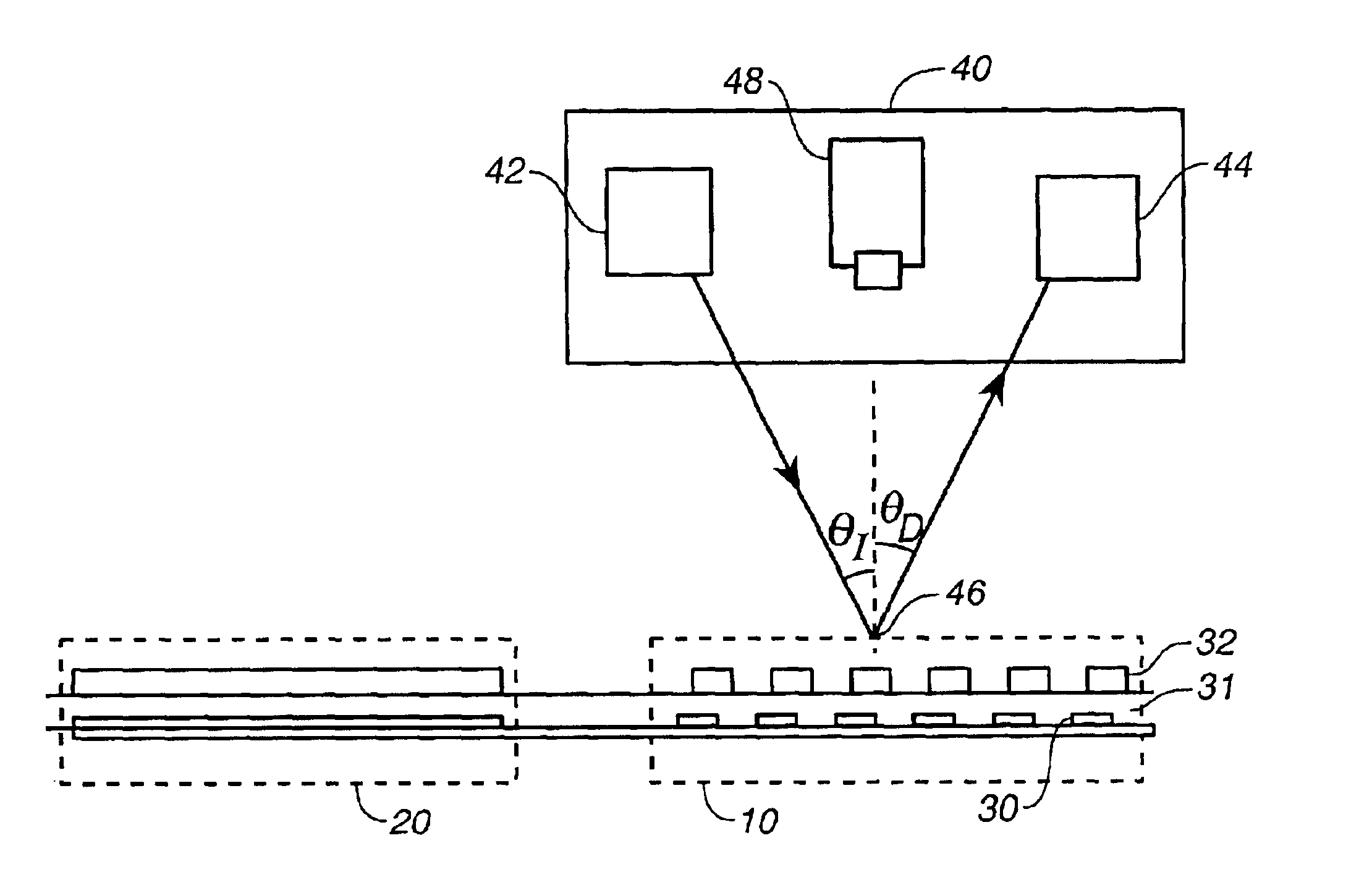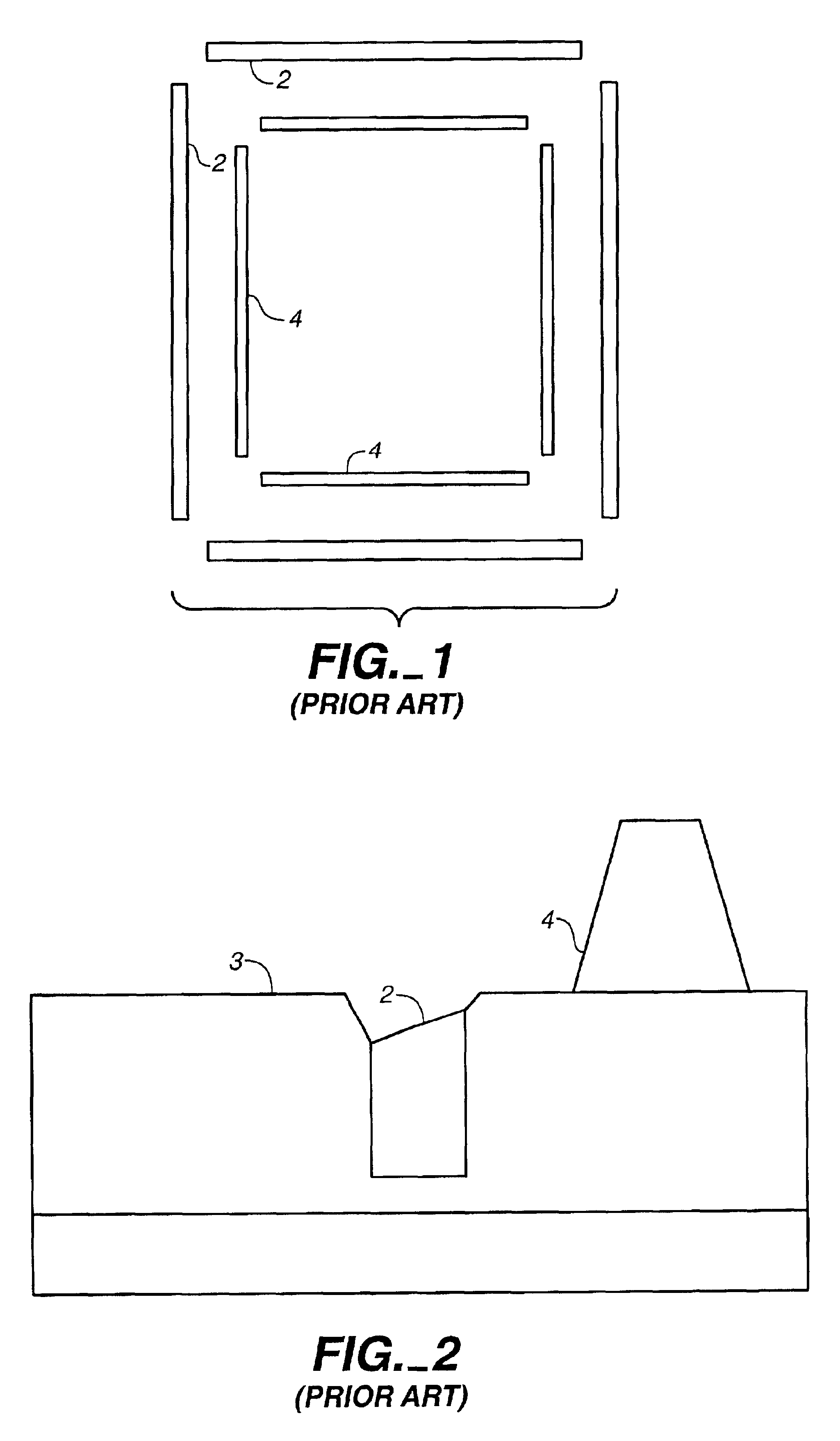Overlay alignment metrology using diffraction gratings
a technology of overlay and alignment metrology, which is applied in semiconductor/solid-state device testing/measurement, semiconductor/solid-state device details, instruments, etc., can solve the problems of not necessarily solving the lines of the grating, and achieve the effects of reducing the dependence of measurements, limiting the space available for vibration damping, and measuring overlay errors
- Summary
- Abstract
- Description
- Claims
- Application Information
AI Technical Summary
Benefits of technology
Problems solved by technology
Method used
Image
Examples
Embodiment Construction
Referring to FIG. 5, in the simplest embodiment of the present invention, two test patterns 10 and 20, each having a pair of overlapping gratings, are placed in a region on the wafer that does not interfere with the devices that are being manufactured. For example, the test patterns can be placed on a scribe line 7 between the dies on a wafer. Test pattern 20 is similar to test pattern 10 rotated by 90 degrees. Each of the test patterns 10 and 20 consists of two overlying gratings 30 and 32 diagrammatically shown in cross section in FIG. 6 or 7. FIG. 7 differs from FIG. 6 only in that the line features in lower grating 30 have an asymmetric profile, e.g. due to a chemical-mechanical planarization (CMP) process. Grating 30 is formed on the lower layer, i.e., at an earlier stage of fabrication. Grating 32 is subsequently formed on the upper layer, which needs to be well aligned laterally with the lower layer. There may be one or more layers 31 between gratings 30 and 32. The upper and...
PUM
| Property | Measurement | Unit |
|---|---|---|
| reflectance versus wavelength | aaaaa | aaaaa |
| reflectance versus wavelength | aaaaa | aaaaa |
| wavelength | aaaaa | aaaaa |
Abstract
Description
Claims
Application Information
 Login to View More
Login to View More - R&D
- Intellectual Property
- Life Sciences
- Materials
- Tech Scout
- Unparalleled Data Quality
- Higher Quality Content
- 60% Fewer Hallucinations
Browse by: Latest US Patents, China's latest patents, Technical Efficacy Thesaurus, Application Domain, Technology Topic, Popular Technical Reports.
© 2025 PatSnap. All rights reserved.Legal|Privacy policy|Modern Slavery Act Transparency Statement|Sitemap|About US| Contact US: help@patsnap.com



